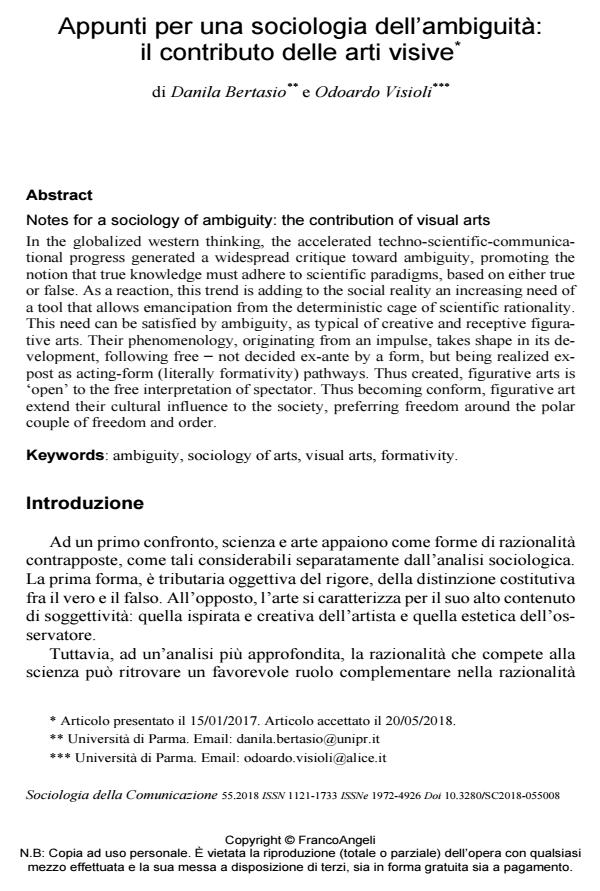Appunti per una sociologia dell’ambiguità: il contributo delle arti visive
Titolo Rivista SOCIOLOGIA DELLA COMUNICAZIONE
Autori/Curatori Danila Bertasio, Odoardo Visioli
Anno di pubblicazione 2018 Fascicolo 2018/55
Lingua Italiano Numero pagine 13 P. 117-129 Dimensione file 211 KB
DOI 10.3280/SC2018-055008
Il DOI è il codice a barre della proprietà intellettuale: per saperne di più
clicca qui
Qui sotto puoi vedere in anteprima la prima pagina di questo articolo.
Se questo articolo ti interessa, lo puoi acquistare (e scaricare in formato pdf) seguendo le facili indicazioni per acquistare il download credit. Acquista Download Credits per scaricare questo Articolo in formato PDF

FrancoAngeli è membro della Publishers International Linking Association, Inc (PILA)associazione indipendente e non profit per facilitare (attraverso i servizi tecnologici implementati da CrossRef.org) l’accesso degli studiosi ai contenuti digitali nelle pubblicazioni professionali e scientifiche
In the globalized western thinking, the accelerated techno-scientific-communicational progress generated a widespread critique toward ambiguity, promoting the notion that true knowledge must adhere to scientific paradigms, based on either true or false. As a reaction, this trend is adding to the social reality an increasing need of a tool that allows emancipation from the deterministic cage of scientific rationality. This need can be satisfied by ambiguity, as typical of crea-tive and receptive figurative arts. Their phenomenology, originating from an im-pulse, takes shape in its development, following free ̶ not decided ex-ante by a form, but being realized ex-post as acting-form (literally formativity) pathways. Thus created, figurative arts is ‘open’ to the free interpretation of spectator. Thus becoming conform, figurative art extend their cultural influence to the society, pre-ferring freedom around the polar couple of freedom and order.
Parole chiave:Ambiguity, sociology of arts, visual arts, formativity.
Danila Bertasio, Odoardo Visioli, Appunti per una sociologia dell’ambiguità: il contributo delle arti visive in "SOCIOLOGIA DELLA COMUNICAZIONE " 55/2018, pp 117-129, DOI: 10.3280/SC2018-055008